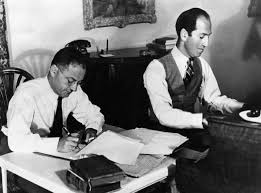DOLLAR DAMES DECEMBER - LOVE AND MARRIAGE...SORT OF
Not every upper class socialite could marry into the aristocracy. Gilded Age young women were allowed to court interested gentlemen. A gentleman would express his interest to a mutual acquaintance and the acquaintance would introduce the gentleman and young lady. Once introduced a gentleman could present his calling card and be permitted to visit the young lady in the family parlor. The young couple would be chaperoned, of course. Couples would often play piano together, subtly touching hands. After courting for a while young couples could attend balls and social events, or go skating and for carriage rides. A gentleman could only make an overture to a lady who had come out into society.
Marriages were often arranged to forge business partnerships, elevate social status, or increase wealth, of on the part of either the bride or the groom. Young women of the Gilded Age were educated in the ways of social manners and presentation, and running homes. Young women married for a secure livelihood. They often went from their homes directly to the home they would share with their spouse. Gentleman were expected to ask permission to marry the young ladt, then propose in person. A letter could suffice. Young ladies were cautioned to not accept a proposal to enthusiastically, and be honest, direct and not dally in a refusal. If an engagement must be broken, a lady did so in a letter and returned all tokens and mementos of the romance.
Then came the wedding. Weddings had been community affairs in the past, but by the Gilded Age they had become private invitation only events. Weddings could be held in both churches or usually at the home of the bride. Queen Victoria set the tradition of a bride wearing a white gown at her wedding. Bridesmaids used to wear white gowns just like the bride's, but by the late 1890s gowns and colors complementary to the flowers and wedding decor became fashionable. The bride usually wore a halo with flowers in her hair with a veil attached.
After the ceremony the bride's family would serve a wedding breakfast. The bride and groom sat in a dedicated corner to receive guests. The bride was addressed first, but if a guest knew only the groom, the groom would then introduce his bride. Receptions did not feature entertainment, as most weddings took place in early morning. In the rare case of an evening wedding, receptions with dinner and dancing did occur. Receptions offered three cakes : one for the bride (white,) one for the groom (dark,) and an elaborately decorated fruit cake. At the end of the reception the cakes would be sliced, box, and given to guests.
The bride and groom would leave their reception for the honeymoon. A honeymoon lasted one to two weeks usually, with a bride and groom sometimes visiting long distance family members and then journeying to a popular honeymoon destination. The best man would accompany the bride and groom to the train station ; only the best man would know the bride and groom's destination. Sometimes the bride would bring along a female traveling companion. The honeymoon was a time for the bride and groom to get to know each other. They had a lifetime ahead, love match or not, as divorces were unusual and difficult to obtain. Marriage, for better or worse, was an institution important to Gilded Age society.
SOURCES :
Brean, Dawn. "My Dearest: Love & Courtship in the Gilded Age." The Frick Pittsburgh Blog. 2 April 2020.
Langford, Donna. "To Have and to Hold : Victorian Wedding Traditions." A Truly Victorian Experience. 26 August 2014.
"Love In the Gilded Age : Successful Second Marriages." Staatsburgh State Historic Site. 27 February 2018.
May, Tam. "The Marriage Age In the Nineteenth Century." May Tam Author.
The Victorian Wedding : Part One - Preparation. Literary Liaisons.




Comments
Post a Comment